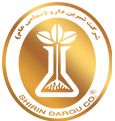Application of solid licorice extract:
A: Drug application:
Glycyrrhizic acid and other substances in licorice solid extract for the treatment of atherosclerosis, gastrointestinal ulcers, ulcers and inflammation of the stomach and intestines, gastric cancer, indigestion, ulcers and inflammation of the mouth, chronic fatigue, tuberculosis, AIDS, tuberculosis Pain, sunburn, cracked lips, Addison’s disease are also useful for increasing female fertility and treating menopausal symptoms, strengthening the adrenal glands, strengthening memory, reducing stress and depression, lowering blood cholesterol levels and treating obesity, softening the breast mucosa, etc. This valuable product is also used as a cough medicine.
This product is effective for sputum and is also diuretic and laxative.
Licorice solid extract is a topical antiviral for shingles and inflammation of shingles, eyes, mouth, gums and genitals and is effective in treating viral and bacterial infections.
In traditional medicine, this product is used to treat muscle spasms and swelling, bronchitis, rheumatism and arthritis, etc.
Licorice solid extract is used to strengthen the immune system and prevent cancer, detoxify and strengthen the liver, heart and arteries, as well as to strengthen the voice.
Another form of medicinal use of this extract in pharmacy is to hide the unpleasant taste of some drugs such as quinine sulfate, aloe, cassia, etc. Also, this valuable product is added to strong laxatives, the consumption of which usually causes severe discomfort. Because consumption of this substance reduces intestinal contractions.
This substance reduces the side effects of some drugs and increases the pharmacological effects.
B: Health application:
The compounds in licorice solid extract have antimicrobial properties and can be used as an anti-spot mask and skin lightener. Therefore, it is also used in a variety of creams. It is also useful to prevent tooth decay, so this product can be used. Used as an anti-decay agent in mouthwashes and toothpaste.
Licorice solid extract is also used in other health products such as lotions, hair tonics, hair dyes, perfumes, etc.
A: Food use:
Another use of this substance is to sweeten food products because it is fifty times sweeter than sugar (Sucrose) and in a wide variety of snacks and foods such as candy, jelly, pastilles, cakes, chocolate, cocoa, bread, pastries, Sauces, ice cream, syrups, soft drinks, teas, chewing gum, beer, fermented beverages, canned food, mushrooms as well as antioxidants, etc. can be found.
D: Industrial application:
Another use of this substance in tobacco and tobacco is as a flavoring agent that gives a natural sweetness to the final product.
Also, due to the presence of saponins in these products and of course due to the similarity of glycyrrhizic acid to saponosides in creating a stable and durable foam, this product is used as a foaming agent in detergents such as shampoo, dishwashing liquid, dishwashing liquid, laundry soap, and. .. Also drilling foam (used in drilling operations for oil and gas wells), fire foam (used for firefighting), concrete foam (for flooring and sloping buildings, filling cavities, water wells and Sewage, tunnels, abandoned mines and wells are also used to build light blocks, etc.).
This product is used in the textile industry for dyeing, as well as in the ink making, leather tanning, etc. industries.
Licorice solid extract is used in the manufacture of shoe wax, sofa covers and curtains.





